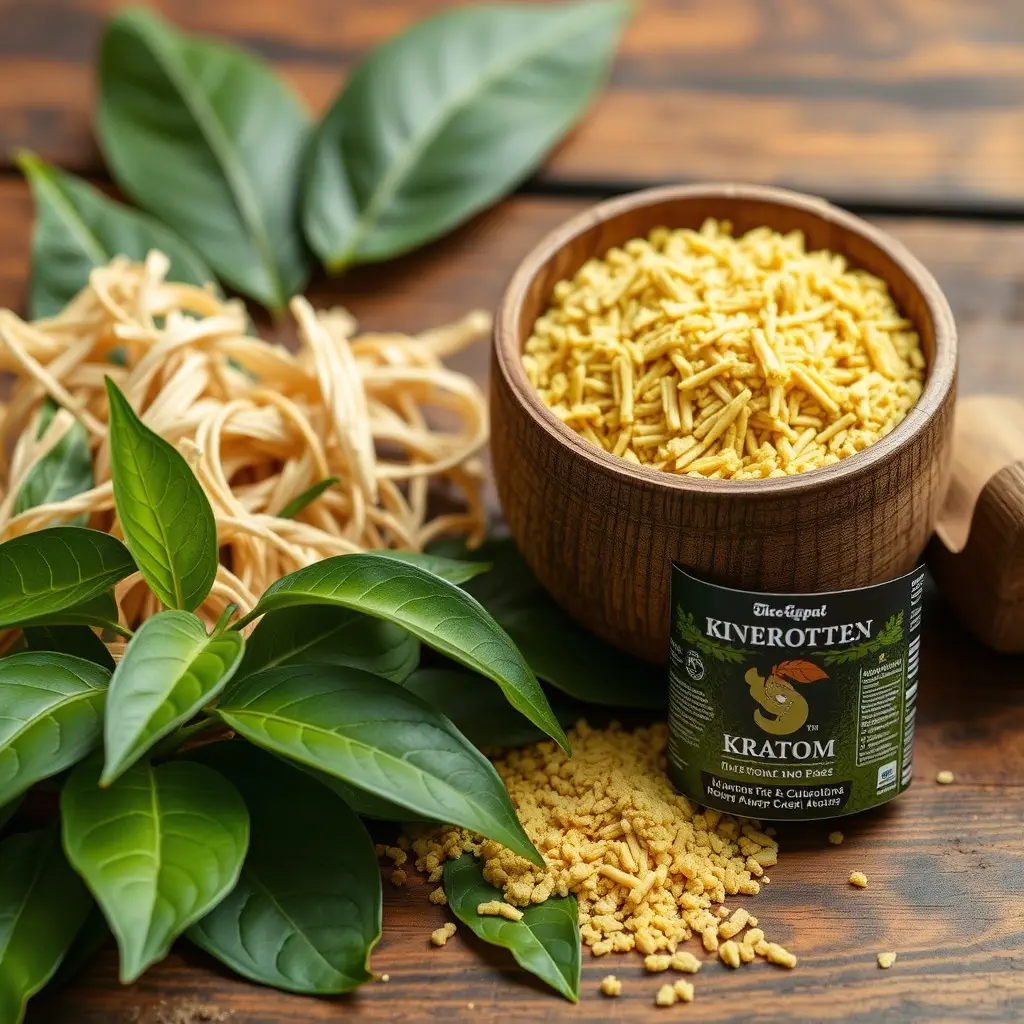The Maeng Da Kratom strain, a potent variant high in mitraphylline and 7-hydroxymitragynine, has captured attention due to its complex effects on opioid receptors, ranging from stimulant to sedative. Its unique alkaloid composition has led to discussions about its detection in drug testing, particularly in the military, where the use of kratom raises questions like "does the army test for kratom." This is a challenge because standard drug tests may not accurately identify kratom's alkaloids among other substances. The historical and cultural significance of Black Maeng Da, native to Southeast Asia, is notable, with its traditional use for pain relief, energy boosts, and as an opium substitute. Its presence in various sectors of society, including within military ranks, reflects its adaptability and traditional medicinal value. However, the use of kratom by military personnel remains a concern due to its unregulated status and variable effects on individuals. It's crucial for those considering its use, especially within regulated environments like the military, to understand its potential impact on drug tests and consult with healthcare professionals, given the strain's complex and individualized effects.
Black Maeng Da Kratom powder, a potent botanical with ethnobotanical roots deeply embedded in Southeast Asian culture, has garnered widespread attention. This article delves into the nuanced effects of Black Maeng Da, exploring its influence on energy and cognitive function. While its popularity has spread globally, questions arise about its impact, such as how it might affect individuals or whether it’s detected by institutions like the military—as per queries like “does the army test for kratom.” Join us as we unravel the potency of Black Maeng Da and shed light on its historical use and contemporary implications.
- Unraveling the Potency of Black Maeng Da Kratom Powder: A Comprehensive Overview
- The Ethnobotanical Roots and Historical Use of Black Maeng Da in Southeast Asia
- Understanding the Impact of Black Maeng Da Kratom on Energy Levels and Cognitive Function
Unraveling the Potency of Black Maeng Da Kratom Powder: A Comprehensive Overview

Black Maeng Da Kratom Powder has long been recognized in botanical circles for its distinct potency, a trait that sets it apart from other strains of kratom. Derived from the leaves of the Mitragyna speciosa tree native to Southeast Asia, this particular strain is renowned for its elevated alkaloid content, particularly mitraphylline and 7-hydroxymitragynine, which contribute to its efficacy. The alkaloids within Maeng Da are believed to interact with the body’s opioid receptors, offering effects that range from stimulating to sedative, depending on the dose. Users often report a more pronounced and sustained impact compared to other kratom strains, making it a subject of both scientific interest and personal anecdote.
In recent times, discussions surrounding the use of kratom in various contexts have extended to its detection in drug testing scenarios, including those employed by the military. The question of whether the army tests for kkatom is one that has garnered attention due to the plant’s opioid-like effects and its increasing popularity among service members. It’s important to note the complexities involved in detecting kratom through standard drug testing protocols, as the alkaloids found in kratom may not always be distinguished from other substances. This presents a challenge for both employers looking to maintain workplace safety and individuals seeking to use kratom responsibly. As such, understanding the nuances of how Maeng Da Kratom Powder affects the body and its detection in drug tests is crucial for anyone considering its use, especially those within regulated environments like the military.
The Ethnobotanical Roots and Historical Use of Black Maeng Da in Southeast Asia

Black Maeng Da Kratom, a strain originating from the dense forests of Southeast Asia, has deep ethnobotanical roots that extend back through history to its traditional use by indigenous communities. Historically, residents of this region have employed the leaves of Mitragyna speciosa, commonly known as kratom, for their medicinal properties and stimulating effects. The Maeng Da variant, in particular, is named after its “Pimp Leaves,” a reference to its larger-than-average leaves that are believed to contain higher concentrations of alkaloids, which are the active compounds within the plant. These communities have used kratom in various ways, including as a natural remedy for pain relief and an energy booster during laborious tasks or before going into battle.
In the context of historical use, Maeng Da kratom has been an integral part of Southeast Asian folklore and traditional medicine practices. Its reputation spread beyond local use as it became a staple in the daily lives of farmers, workers, and even members of the military who sought its purported benefits to enhance performance and endure fatigue. The plant’s effects were also said to aid in opium substitution programs, offering a natural alternative for pain management and withdrawal symptom relief. As such, the history of Black Maeng Da kratom is not only rich in cultural significance but also reflects its adaptability and the diverse ways it has been integrated into the lives of individuals across Southeast Asia over centuries.
Understanding the Impact of Black Maeng Da Kratom on Energy Levels and Cognitive Function

Black Maeng Da Kratom, a strain derived from the leaves of Mitragyna speciosa, has garnered attention for its potential effects on energy levels and cognitive function. This particular strain is recognized for its distinct alkaloid profile, which may contribute to its potency and the breadth of its reported effects. Users often report that Black Maeng Da Kratom can provide a noticeable energy boost, often described as more focused and sustained than the jittery sensation associated with caffeine. This energizing effect is thought to stem from alkaloids such as mitragynine and 7-hydroxymitragynine, which interact with the body’s opioid receptors and may influence neurotransmitter systems responsible for energy regulation.
In addition to its stimulatory properties, Black Maeng Da Kratom is also revered for its impact on cognitive functions. The strain is said to enhance mental clarity and concentration, potentially aiding in tasks that require sustained attention and focus. Some individuals have found that incorporating this kratom strain into their routine can facilitate improved performance on cognitive tasks, which could be beneficial for those in professions where such mental acuity is crucial. However, it’s important to approach the use of any kratom product with caution, as its effects can vary significantly among individuals and can be influenced by dosage and personal sensitivity. Additionally, while there are discussions about military personnel using kratom, including questions like “does the army test for kratom,” it is not a substance officially endorsed or authorized for use by military institutions due to its regulatory status and potential for both benefits and adverse effects. Users contemplating the integration of Black Maeng Da Kratom into their regimen should consider consulting with healthcare professionals, especially if they are part of regulated organizations such as the military.
Black Maeng Da Kratom powder, a potent strain with deep ethnobotanical roots in Southeast Asia, has garnered significant attention for its effects on energy levels and cognitive function. This comprehensive overview has elucidated the nuanced interplay between Maeng Da’s alkaloid profile and the user’s experience, offering insights into how it may be employed to enhance daily well-being. While the discourse surrounding Kratom’s role in various aspects of life is ongoing, including within military contexts—as evidenced by queries like “does the army test for kratom”—the scientific and regulatory landscapes continue to evolve. It is crucial for users to approach such substances with informed understanding and prudence. As research progresses, it will undoubtedly shed further light on Kratom’s full spectrum of effects and potential applications, contributing to the broader conversation on natural supplements and their role in health and wellness.






